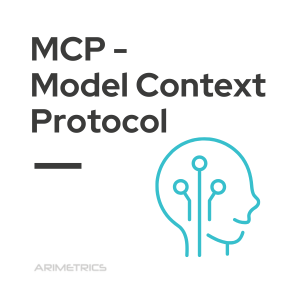Definition: 
MCP, or “Model Context Protocol”, is a strategic digital marketing methodology aimed at increasing the acquisition of qualified leads for companies and brands. The MCP approach is based on the combination of attraction, segmentation, and conversion tactics, using digital channels such as social networks, search engines, email marketing, and specialized content. The goal is to generate a constant flow of inquiries and followers interested in the company’s products or services, optimizing the quality of contacts and facilitating their conversion into real customers.
History and Development of MCP
The concept of MCP arises as a response to the evolution of digital marketing and the growing need for companies to connect with more segmented and demanding audiences. Since the appearance of the first digital marketing campaigns in the 90s, brands have sought strategies to capture the attention of users in an increasingly competitive environment. The development of MCP is supported by the integration of technological tools, data analysis, and personalized content, allowing companies to adapt their messages and actions to the characteristics and needs of their potential customers.
With the rise of digital platforms and the mass use of the internet, MCP has evolved to incorporate practices such as marketing automation, the use of artificial intelligence for segmentation, and real-time measurement of results. Today, MCP is a key methodology for any company that wants to scale its lead acquisition and improve its return on investment in digital marketing.
Main Characteristics of MCP
- Advanced segmentation: MCP uses demographic data, interests, and behaviors to identify and attract the most relevant prospects for the business.
- Content strategy: It relies on the creation of valuable content, aligned with the needs of the target audience and optimized for SEO, social networks, and other digital channels.
- Automation and measurement: It incorporates tools to automate lead acquisition and tracking processes, as well as to measure the performance of each action in real time.
- Personalization: It allows adapting messages and offers to each segment, increasing the conversion rate and user satisfaction.
- Multichannel: It takes advantage of the presence on different digital platforms (web, social networks, email, online advertising) to maximize the reach and effectiveness of campaigns.
- Continuous optimization: MCP encourages the constant review of results and the improvement of strategies based on data and analysis, adjusting tactics to obtain better results.
Advantages of Using MCP
- Increase in quality inquiries: By focusing on truly interested prospects, MCP raises the quality of inquiries received, facilitating the closing of sales.
- Better segmentation and personalization: The ability to segment and personalize messages allows connecting more effectively with each type of client, increasing the relevance of the brand.
- Greater return on investment (ROI): By optimizing the acquisition and conversion process, MCP helps reduce costs and maximize the benefits of digital campaigns.
- Scalability: MCP is adaptable to companies of any size and sector, allowing to scale the acquisition actions according to the growth objectives.
- Measurement and control: The methodology facilitates the detailed monitoring of each stage of the process, allowing to identify which tactics work best and where to invest resources.
- Peace of mind for the commercial team: By generating a constant flow of qualified leads, MCP reduces the pressure on the sales team and improves the predictability of results.
How MCP Works
The operation of the MCP is based on a continuous cycle of attraction, conversion, and loyalty:
- Attraction: Campaigns and content are developed to capture the attention of users who meet the ideal client profile, using SEO, digital advertising, social networks, and other channels.
- Acquisition: Interested users are guided to forms, landing pages, or other registration mechanisms, where they leave their data in exchange for valuable content or a relevant offer.
- Qualification: Through automation and scoring tools, the level of interest and the potential of each lead is evaluated, prioritizing those with a higher probability of conversion.
- Conversion: The commercial team contacts the most qualified leads, applying personalized strategies to close the sale.
- Loyalty: Once converted into clients, follow-up and loyalty actions are implemented to maximize the value of each client and encourage recommendation.
This process is dynamic and is adjusted based on the results obtained and the changes in the behavior of the target audience.
Best Practices to Implement the MCP
- Define the ideal client profile: Use historical data and market analysis to identify the characteristics of your best clients and guide the strategy towards them.
- Create relevant and optimized content: Develop content that answers the questions and needs of your audience, using relevant keywords to improve search engine positioning.
- Automate acquisition and follow-up: Implement automation tools to manage leads from acquisition to conversion, ensuring an efficient process without loss of opportunities.
- Segment and personalize: Divide your database into segments and adapt messages and offers to each group to increase the conversion rate.
- Measure and adjust constantly: Analyze the results of each action and make adjustments based on the data to improve the performance of the strategy.
- Train your team: Make sure that both the marketing and sales teams understand the MCP methodology and work aligned to maximize the results.
- Take advantage of multichannel: Use different communication and promotion channels to reach your audience at different times and contexts, enhancing the reach of the strategy.
MCP is a methodology that, well implemented, can transform customer acquisition and the digital growth of any company, allowing to achieve business objectives efficiently and sustainably.
